Digital Technologies for Health Financing in Cameroon
- Title
-
Digital Technologies for Health Financing: Introducing openIMIS to Improve
Population Outcomes of the Chèque Santé Program in Cameroon - Research Institute
-
Heidelberg University/Heidelberg Institute of Global Health
- Funding period
-
from: 01.03.2023
to: 31.08.2025 - Country and Region
-
Cameroon; Whole country
- Sector
-
Health and Social Protection
- Development Organisation
-
GIZ
- Research Design
-
DID + matching
Project description
Short Description
Digital Technologies for Health Financing: Introducing openIMIS to Improve Population Outcomes of the Chèque Santé Program in Cameroon
As countries strive to attain Universal Health Coverage (UHC), digital technologies for health financing (DTHF) – e.g. mobile telephone applications for paying for health insurance contributions or digital claims management systems – have received more attention as promising solutions situated at the intersection between social health protection and digitalisation. However, evidence regarding the impact of DTHF is extremely sparse. Therefore the World Health Organisation has recently appealed to the research community to engage more actively in producing such evidence, working closely alongside development initiatives which support the implementation of DTHF.
DEval will fund the impact evaluation of openIMIS, a DTHF initiative which aims to digitalise all operations of a subsidised health financing scheme aimed at pregnant women in Cameroon.
Context
Cameroon, a country with an extremely high maternal mortality rate (782 deaths per 100,000 live births) and a high dependency on user charges among women (over 70% of health expenditure for maternal care is out-of-pocket) is in urgent need of improvements in the health sector. OpenIMIS is being implemented to enable the digitalisation of a health financing intervention aimed specifically at women, the Chèque Santé.
Innovation & Method
The Ministry of Public Health plans to introduce the openIMIS software to manage all functions of scheme management, from beneficiary enrolment to claim verification and payment approval in order to streamline financial flows, decrease errors and delays in manual paperwork processing and reduce administrative costs. Gains in the operational effectiveness and efficiency of the reformed scheme are expected to foster UHC objectives, specifically effective coverage and financial protection.
A pre- and post-test non-randomised design with matched controls is used for a total of 33 health facilities which are equally distributed across the three regions: Far North (Maroua), North (Garoua) and Adamawa (Ngaoundéré). Difference-in-differences (DID) is used as the main analytical approach. In order to strengthen the analytical approach, DID is combined with Propensity Score weightings, which are applied at the analytical stage along with additional information acquired during baseline data collection which may potentially be relevant.
Intervention facilities will be selected by the implementation partners based on: (i) proximity to the nearest regional hospital and (ii) representation of different care, ownership and internet stability levels. An equal number of 33 control facilities (where Chèque Santé will continue as a traditional paper-based model) will be identified based on observed baseline variables in order to match (i) selection criteria used for intervention facilities, but also (ii) maternal care service volume and human resources/staffing levels.
Expected results/Research questions
The goal is to evaluate the changes produced by the digitalisation of the Chèque Santé scheme on management and population outcomes. The primary objective is to measure the impact on women’s effective service coverage and financial protection. The secondary objective is to measure the impact on managerial capacity at facility and district levels, including the costs of introducing and maintaining openIMIS.
The guiding research questions are:
RQ1: What is the impact of the digitalisation of the Chèque Santé scheme on effective maternal care coverage and related financial protection?
RQ2: What is the impact of the digitalisation of the Chèque Santé scheme on the managerial and clinical capacity at health facility and district level, and how is this linked to the observed population outcomes?
RQ3: What are the costs of introducing and maintaining openIMIS compared to the traditional paper-based Chèque Santé scheme?

